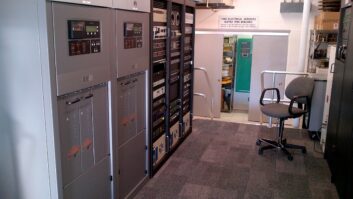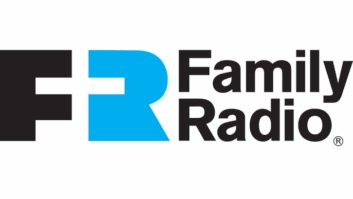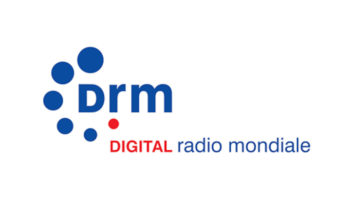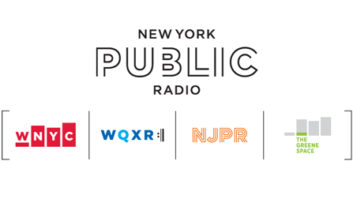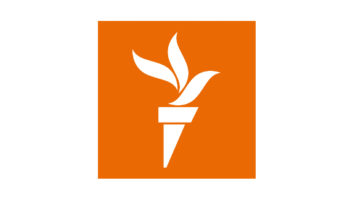Chants of Pobo! Pwanku! — Komboni Radio’s signature slogans — which translate to mic drop are reverberating in Zambia following the station’s ongoing, ambitious initiative to distribute 20,000 free solar-powered radios countrywide by the end of 2025.
“The project has been very, very well received. So far, we’ve distributed over 1,113 solar radios and the distribution is still on,” Lesa Kasoma, Komboni Radio’s proprietor and CEO, who for full disclosure is this writer’s sister, says. The target is to distribute 5,000 solar radios every quarter and “I think we’re on course,” Kasoma adds.

Arrival of the main consignment of the solar radios in Zambia on Feb. 13, 2025, coincided with World Radio Day whose theme was “Radio and Climate Change.” In a Facebook livestream that garnered more than 13,000 views, Osward Tembo, Komboni Radio’s Lusaka station manager can be seen instructing his staff to immediately distribute the radios, as was befitting in commemorating World Radio Day.
The Bluetooth-equipped solar radios are tailor-made and Komboni-branded. Kasoma said that management was intricately involved in the blueprint. Komboni Radio wanted a simple, portable radio that would serve as a posterchild for the station’s corporate responsibility.
Additionally, the station wanted it to include adaptable features. For instance, they wanted it to have the same USB cable that cell phones use given their ubiquity.
Kasoma further explains that: “We’d debated whether to lock them on the Komboni Radio frequencies but we realized that there would be certain times we’d want to establish partnerships with other radio stations.” These partnerships would entail memorandums of understanding
where the few stations that reach remote rural areas could disseminate relevant programming from Komboni Radio and be given the solar radios to distribute to their listeners.
Visually, the solar radios bear a distinctive red and black color scheme which is also the emblem of Komboni Radio’s swag. The significance of this is that both colors are tied to an important artifact — the Zambian flag.
Black symbolizes the people of Zambia and red represents their struggle for freedom. Engraved in the red portion of the radios is a smiley face serving a two-fold purpose: Reiterating their purpose of putting a smile on people’s faces and reinforcing their freedom. This freedom is manifested via equitable access to information — a basic human right — as stipulated in Article 9 of the African Charter on Human and Peoples’ Rights.

It is through that access that people are exposed to the media’s watchdog role which enables them to make informed choices, including those pertaining to climate change. The important themes that preoccupy media scholars who study climate change include Climate Justice and Equity or CJE, Climate Change Impacts or CCI and Climate Change Mitigation or CCM.
CJE incorporates the media’s sensitization role vis-à-vis climate change and indigenous and vulnerable communities. It also delves into representation as articulated in Stuart Hall’s cultural studies theory.
From an advocacy perspective, the media’s role in environmental justice and equity are studied. CCI stretches from studying the rising sea levels to erosion and includes extreme weather events such as droughts and floods, both of which are currently pertinent to Zambia. The ecosystems, biodiversity and impacts on human health are also studied under CCI.
Topics examined under CCM include energy efficiency, conservation and renewable energy sources. As Zambia grapples with loadshedding, a residual effect of drought under CCI, Komboni Radio’s bold and unprecedented move of distributing the solar radios is an example of a compelling CCM case study. Kasoma sees the move not only as an opportunity to incentivize Komboni Radio’s listenership but as a gamechanger; a checkmate on loadshedding,
[Editor’s note: Rolling blackouts, or “load shedding,” are a last-resort measure used by an electric utility company to avoid a total blackout of the power system. Shedding load may occur if there is a shortage of electricity supply, or to help prevent power lines from becoming overloaded.]
To contextualize the magnitude of the problem, the Voice of America reports that current loadshedding is the worst it has been in 20 years. A July 12, 2024, Data Center Dynamics article states that the rolling blackouts that the country’s state-owned power utility company, Zambia Electricity Supply Corporation — referred to by the acronym ZESCO — has instituted last from six to 12 hours a day. Kasoma elaborates that it is not unusual to sometimes have power outages lasting from 5 a.m. to 10 p.m.
“On average we’d receive three to four hours of power from ZESCO,” Kasoma says of Komboni Radio. She further explains that there was a time when businesses could apply to the government for exemptions from loadshedding from ZESCO, but hospitals are the only ones that are prioritized. “I don’t think radio stations are given that much priority. If at all they are, then it’ll be the national broadcaster [i.e., Zambia National Broadcasting Corporation] but not the privately-owned.”
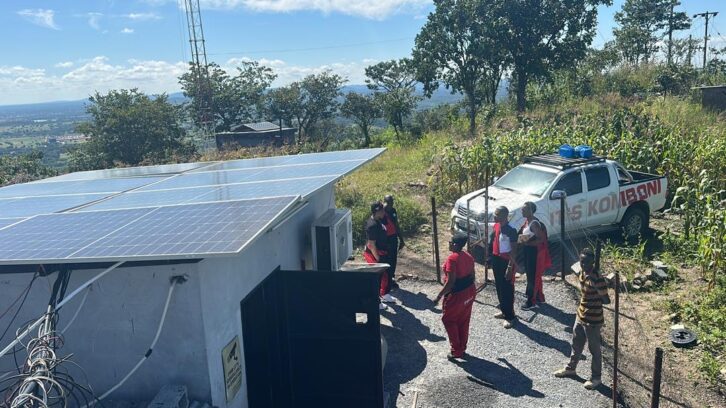
The impact of loadshedding on the broadcast industry has been unsettling. Chikosola Chuula, the chairperson of the Independent Broadcasting Authority, Zambia’s broadcast media regulator, quoted in News Diggers, observed that the frequent and extended power outages have made it difficult for broadcasters to maintain consistent operations. It has impacted the quality and availability of broadcasts, and this is particularly pronounced at radio stations in rural areas. Chuula also noted that “the power cuts [have] made it hard for IBA to monitor some stations,” not to mention the revenue loss that the industry has suffered.
Kasoma has firsthand knowledge of the negative economic impact that loadshedding has had on businesses, and cannot say enough about what going solar has meant in terms of realizing the capability of Komboni Radio’s state-of-the-art equipment. The station’s transmitter, for instance, when fully charged, covers an impressive radius of 500 km. The catch however is that “one needs to be very mindful of the government’s distribution of airwaves because they’d give you certain restrictions,” Kasoma said.
Adhering to its licensing stipulations, Komboni Radio fully covers Lusaka and Copperbelt provinces, including the surrounding areas. According to Zambia’s last census carried out in 2022, the populations of the two provinces were 3,079,964 and 2,757,539, respectively. That census pegged Zambia’s population at 19,610,769. Komboni’s next target is Eastern Province, the third largest in the country, with a population of 2,454,788. According to Kasoma, the station’s crowning achievement will be attaining countrywide coverage.
Until a time comes when Komboni Radio will have the required licensing and government approvals to operate countrywide, it is capitalizing on online digital technologies that will help maximize its listenership. The station relishes in “what we call a worldwide love because we’re on apps,” Kasoma notes, adding that “it’s easier because then there’s no bureaucracy. You just have to get the software and you’re online.” The station streams live on Online Radio Box, Radio FM, Radio Garden and on its website, which also links to social media platforms such as Facebook.
However, without power due to loadshedding, there are no listeners or audience reach to boast of, whether online or on the ground. Economic impact aside, loadshedding has denied listeners their basic human right of access to information.
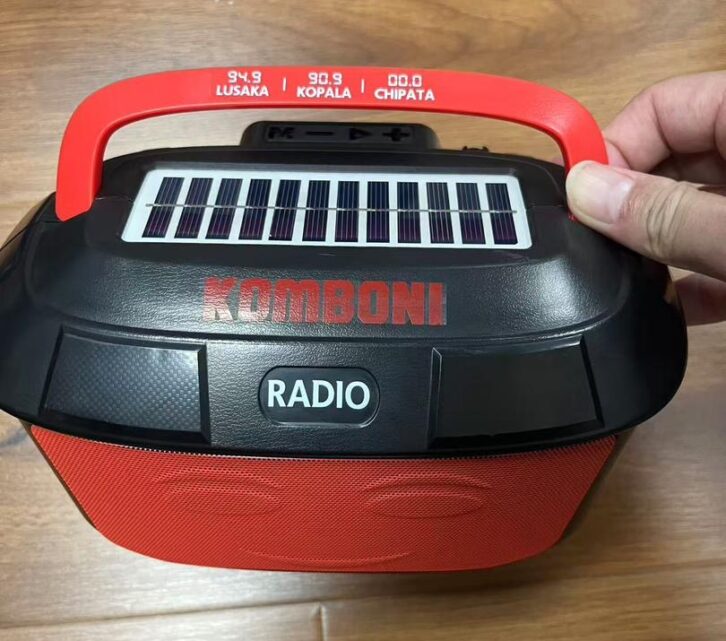
Komboni Radio’s listenership base mainly comprises people who live in high-density areas known as compounds, Kasoma explains, who earn low incomes. Seeing them flock to filling [gas] stations to charge their phones just so they could listen to radio, make calls, receive/send money via Airtel Money and MTN Mobile Money (the two most popular mobile money apps in Zambia) struck a chord with her.
The design of the solar radios with provision for charging cell phones was deliberate. Kasoma emphasizes that the solar radio project is a way of not only saying to the listeners that “we see you” but of also reminding them that “your welfare is our welfare.”
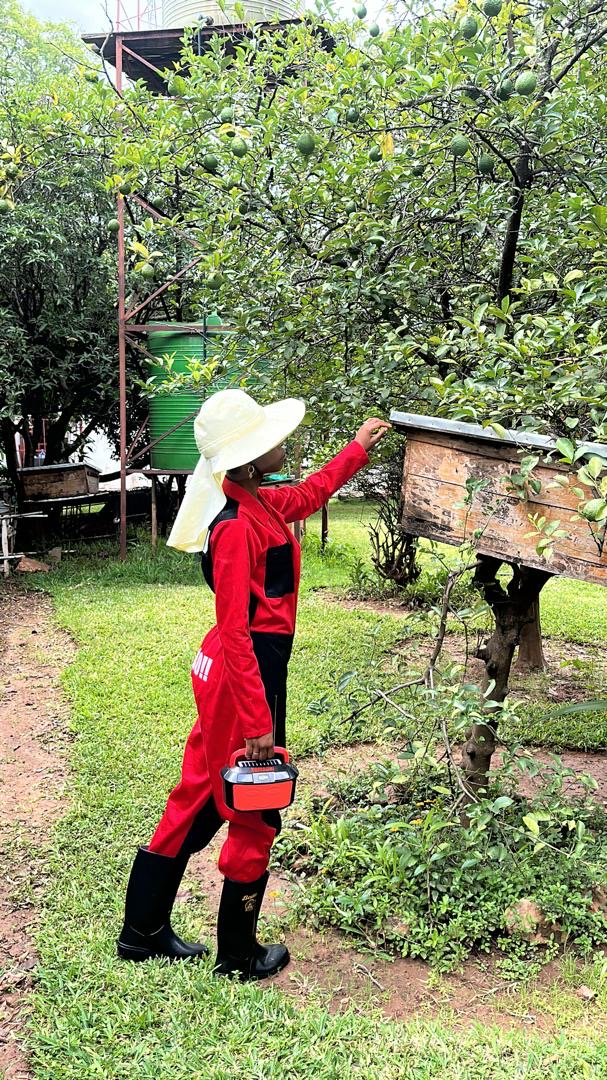
A recent Afrobarometer study found that while knowledge on climate change was still low in Zambia, 82% of survey respondents who indicated that they were familiar with the phenomenon said that it was making life worse and they wanted to see concerted efforts in dealing with it. Seventy-eight percent noted that the government needed to do a lot more to mitigate climate change. The study, which was conducted in August and September 2022, had a sample of 1,200 adult Zambians with a margin of error of +/-3 percentage points at a 95% confidence level.
In Zambian society and media circles, Komboni Radio has carved a reputation as the station that throws a lifeline to small-time traders such as marketeers. Most are women hoping to advertise their wares and put food on the table at the end of the day especially in light of the rising cost of living. The Jesuit Centre for Theological Reflection, a thinktank that compiles the Basic Needs and Nutrition Basket, puts this in context.
As of February 2025, the cost of living for a family of five in the capital city, Lusaka, was ZMW 11,599.12 (the equivalent of $446.12). This reflected an almost 7% increase from January 2025 when it was ZMW 10,800.56 (the equivalent of $415.41). JCTR attributes this increase in the cost of living to price hikes in food and non-food items “with charcoal prices surging due to seasonal constraints and persistent loadshedding.”
Hikes in food prices are acutely felt by farmers, who make up an important constituent of the recipients of Komboni’s solar radios. Frederick Kan’gombe, a farmer in Luanshya, in the Copperbelt Province said: “I was very happy to receive the solar radio, especially now when electricity is scarce. There’s no problem now. It’s just a matter of putting the radio in the sun and it charges.”
Another thankful farmer, Mercy Mweemba, who specializes in vegetable farming says now, with the solar radio, she can ease into her day with Komboni Radio’s uplifting early morning praise and worship program.
For Mweemba just seeing “Komboni Radio” engraved on the solar radio adds an extra special touch for her.
Schools are yet another key area where these free solar radios are being distributed. Education, as Nelson Mandela said, “is the most powerful weapon you can use to change the world.” To this effect Good Neighbors, a non-governmental organization, distributed 700 solar radio kits to schools in rural areas back in 2020 in response to the COVID-19 pandemic. The pandemic had rendered schools closed and the solar radios helped bridge the learning gap. During that era, the propensity in affluent countries was for schools to migrate online. In less affluent countries, radio, which was dubbed by the United Nations as “the Medium that leaves no one behind,” was the obvious choice.
Komboni Radio is “highly representative and we engage the community” to seek ownership of their own problems, Kasoma says. Sometimes, this means sharing experiences and lessons from one compound to the next. To institute this shared governance, Komboni’s role is to track and disseminate information of what has worked in one compound so that others can adapt it to their respective environments.
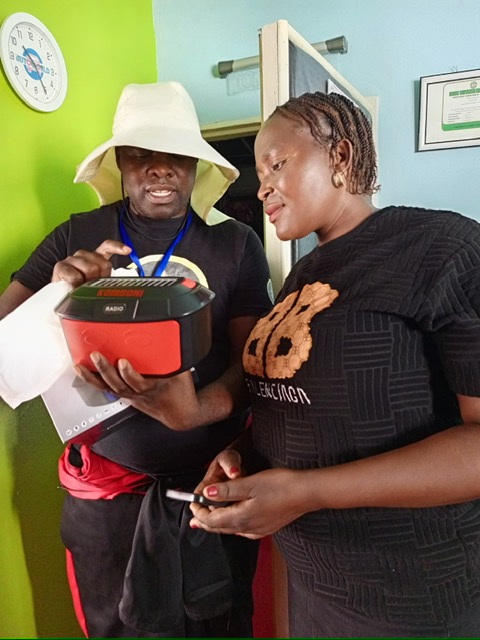
As innovative as making solar a staple at Komboni Radio is, it is not the alpha and omega to loadshedding and the climate change catastrophe, Kasoma asserts.
For her, climate change has necessitated what she refers to as “a three-legged system” that essentially triangulates solar with commercial/diesel-powered generators and the three to four hours of hydroelectric power the station gets from ZESCO. “It’s working out pretty well,” she said of this system.
Leading up to March 6, 2025, when Kasoma was interviewed, there had been a fluke in the weather pattern from the usual drought. “Right now, is a tricky period because it is a cloudy time so there is no solar being powered … there is no sunshine,” she said.
The period was characterized by heavy rains and Kasoma said “a lot of high-density areas are really flooded and sometimes they don’t know that the rains are going their way. It’d be good for us to inform them and warn them through the meteorological department.”
Komboni Radio also fulfills its mission through social commentary and through music. The bulk of the music played on-air is indigenous Zambian music, some of which tackles climate change’s impact on agriculture. The station also contracts local musicians to serve as DJs — some of whom use the opportunity to issue commentary on their music.
Kasoma’s work has not gone unnoticed. In a Facebook communique that ushered in Women’s History Month, IBA described her as “a trailblazer in Zambia’s radio landscape who has significantly impacted community mobilization through innovative broadcasting.” It is against this backdrop, coupled with the distribution of 20,000 solar radios by the end of 2025, and the “three-legged system” that Komboni Radio is worth all the Pobos! and Pwankus!

